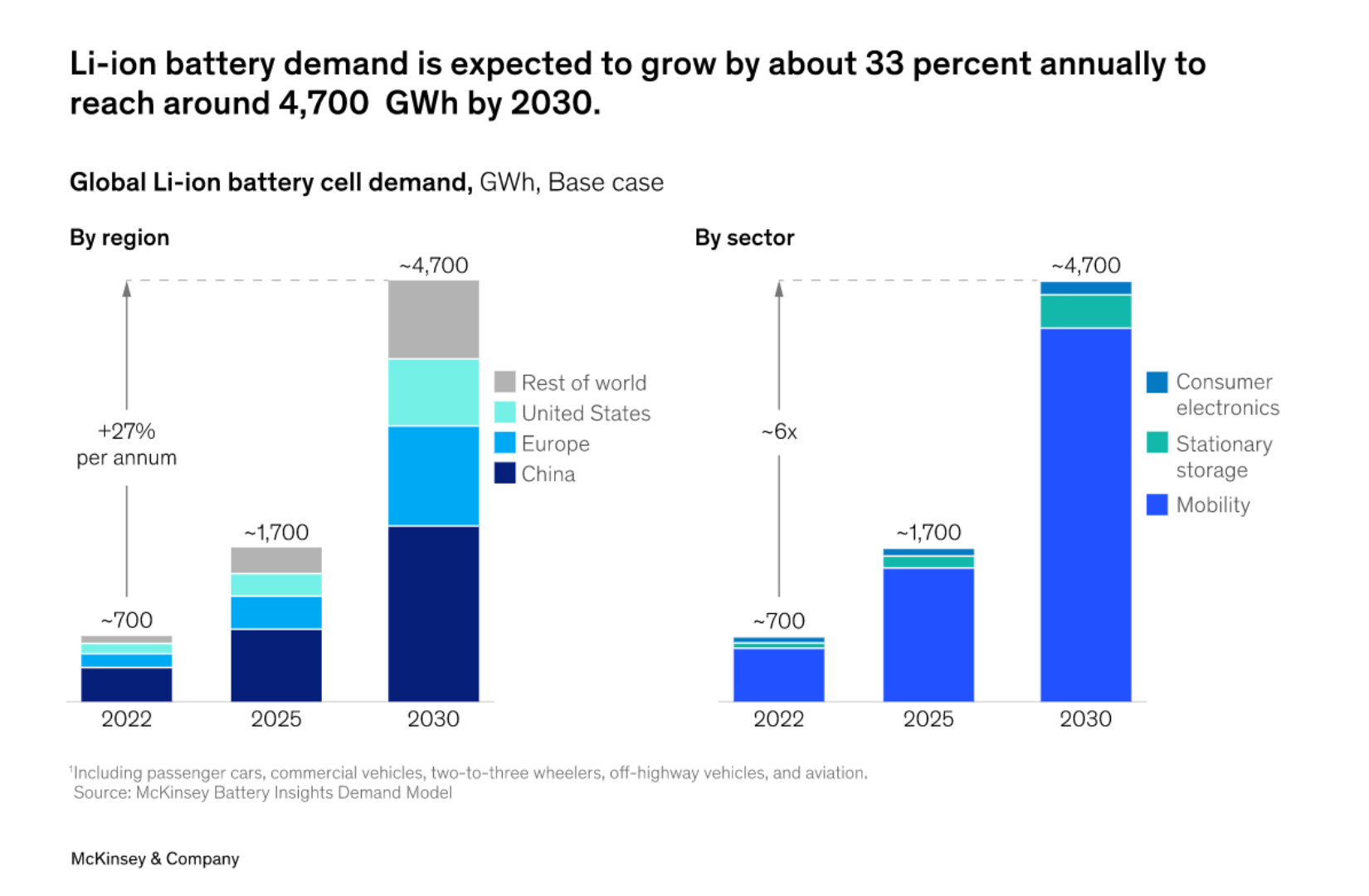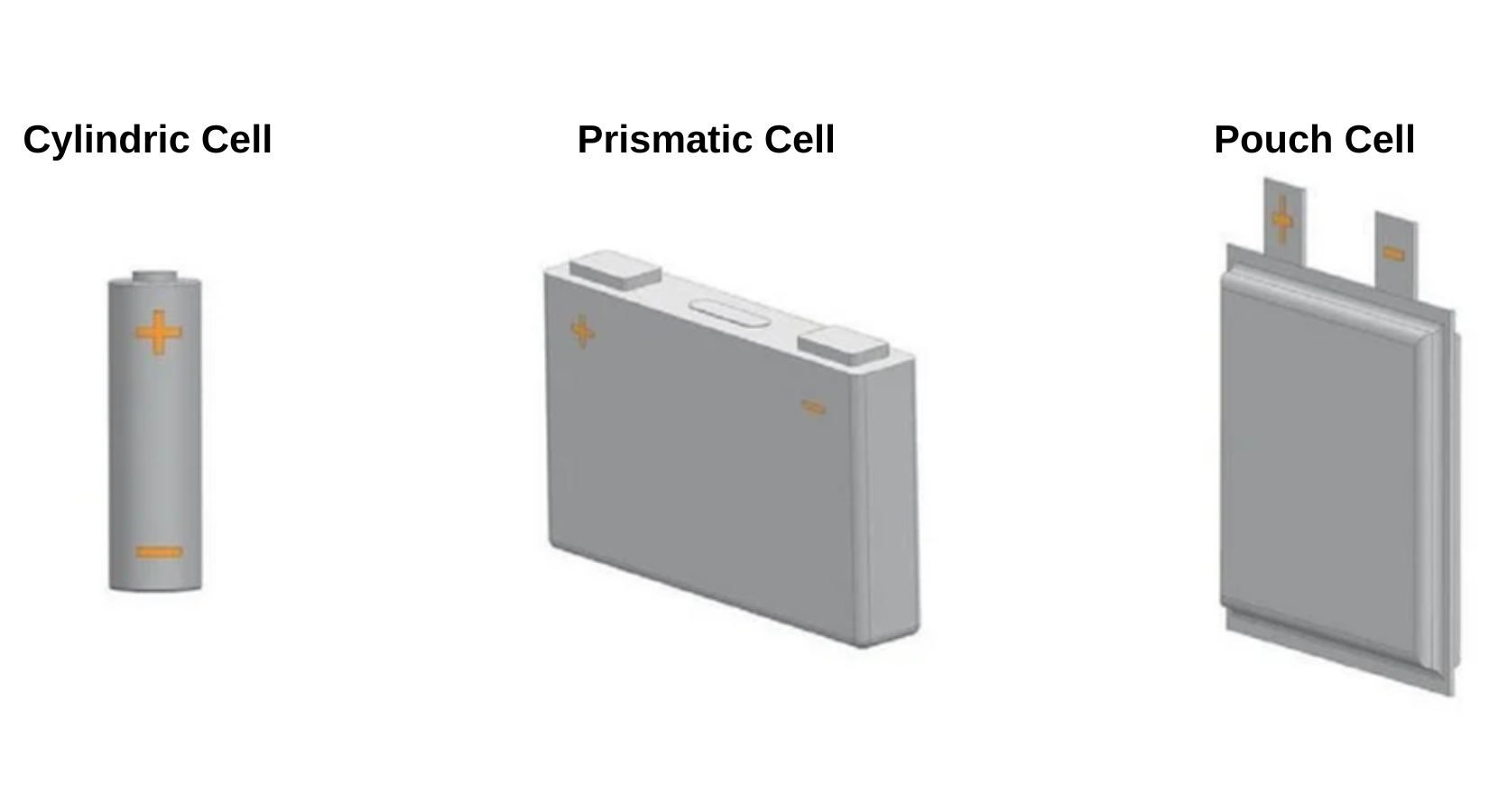The OECD estimates that the market is expected to reach 3.5 TWh by 2030, requiring an additional 50 to 90 gigafactories, each of them reaching an annual capacity of 35 GWh. With the demand soaring, shipping LiBs remains a challenging and complex process1.
Global shipments of LiBs in 2021 increased by almost 73% compared to the previous year2. The electric vehicle (EV) sector itself represented 74.4% of total shipments in 2021 – over 90% increase from 2020. The same period of time has marked a whopping 113% increase in shipments for the energy storage sector (ESS) with nearly 12% of battery shipments3. The pressing need to reduce climate change through zero-emission mobility and broader energy transition is driving the demand for LiBs. The race is not only towards production but also maximizing the volumetric capacity of one battery. The LiBs energy density increased by more than eight times between 2008 and 20204.
The LiB market is exponentially growing, and so is the urgency to create a safer and more sustainable way of shipping it. The standards are high, and the regulation and the value chain are complex. With that said, what are the key things to keep in mind when choosing the optimal package to ship LiBs?
Safety First
Not every LiB is the same. LiBs are made from cells, which come in different shapes and forms, e.g., cylindric, prismatic, and pouch. The cells are then combined into modules to create a battery pack. They use chemistries (NMC, NCA, LFP etc), in the form of chemical potential to store energy. This is why LiBs are sensitive to damage, especially during transport, and the consequences of such damage can be catastrophic. Inappropriately packaged and shipped batteries could start leaking, resulting in short circuits and toxic gas emissions, fire, or explosion on their route to the final destination.
There is no doubt that battery cells from the end of the production line all the way to the assembly facility must be transported in a safe way. Therefore, under the UN’s taxonomy, all LiBs are considered “dangerous goods” and have to adhere to strict shipping and packaging regulations. Those requirements depend on the mode of transportion (air, road, rail, or sea), the battery maturity (prototype; series; waste; damaged or defective battery) as well as the shipping route. The complex web of international, domestic, and regional regulations outlining the conditions and specificities of shipment is an added challenge. To avoid the potential danger, LiB packaging should be customized, safe, and designed in compliance with the regulations depending on the shipping itinerary.
Consider the process
Before the battery makes it out of the production line, the shipment route and packaging must be carefully planned. Think about it this way: before embarking on a long journey, one wants to check the road conditions, distance, and traffic. Even if all of those elements are not under one's control, one wants to be prepared for them and ensure that the journey is safe at all times.
The same applies to transporting battery cells. As they are packed and shipped from the manufacturing lane, they must make their way to the assembly line (such as an OEM). This means that LiB packaging will pass through several facilities with different conveyor systems and different grippers or be subject to varying hygienic requirements. Establishing proper positioning of the cell in automated pallets and setting exact tolerance for this position, for instance, would prevent the batteries from being damaged in the automated handling process. It should also be subject to testing to ensure the safety of the battery cells across the entire transportation process.
Sustainability matters
Saving resources in the battery supply chain has become the number one priority for many companies. The EV sector, for instance, is moving towards a closed-loop battery system for LiB recycling. This means that the packaging should not only be sturdy but also returnable.
To decrease the use of virgin materials, many regulators now require that packaging is made from recycled materials. This particularly applies to plastic packaging. In the case of LiBs, however, current UN regulations restrict the use of recycled plastic material, except as inner lining in packaging certified as single packaging (not combination packaging). Additionally, the recycled plastic components are subject to very extensive source tracking and lab testing of each batch used to produce a particular package. It is therefore extremely resource- and time-consuming, and at times even impossible, to include post-consumer content in the LiB packaging. This setback did not come unnoticed. The United Nations is currently working on amending the definition of recycled plastic material and looking into ways to increase its use in transport packages for dangerous goods overall.
Complex approach to complex issues
The LiB industry is constantly evolving and innovating. The regionalization of its production might shorten the distance between the manufacturer and the assembly facility, but the risks and challenges of transporting the cells and batteries pertain. Shipping LiBs is a complex process. Choosing the right, experienced partner to help design packaging that meets all needs, while also meeting all the various guidelines required for the shipping method of choice, is therefore crucial.
At Nefab, we do just that. Get in touch if you want to know how we reduce our customers' cost of logistics and environmental impact with optimized and certified lithium-ion battery packaging solutions.
We save resources in supply chains, for a better tomorrow.
Want to learn more?
GET IN TOUCH
Contact us to learn more about our sustainable solutions driving supply chains forward.
LEARN MORE
GreenCALC
Nefab’s own certified calculator measures and quantifies financial and environmental savings in our solutions
Sustainable Solutions
Engineered packaging for sustainable supply chains
Sustainable Materials
Fiber-based packaging and raw materials

